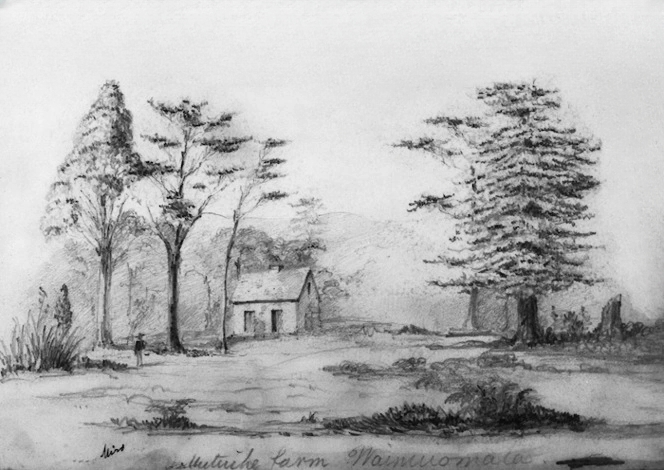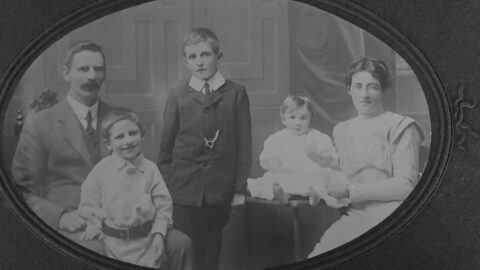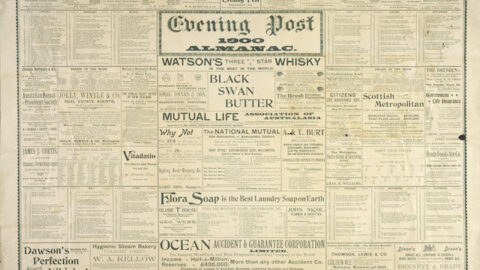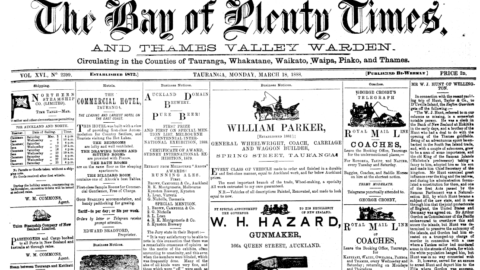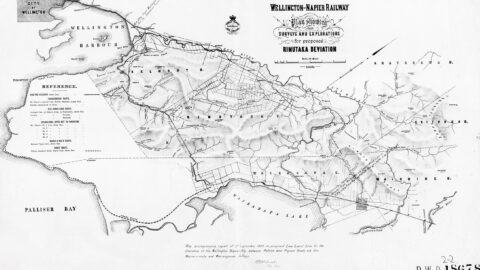Set in a clearing among towering native trees, a modest cottage with two doors and an attic is pictured.
A man stands to the left. It is possibly the earliest European home in Wainuiomata.
Mutuihe Farm was the homestead of William Bertram White, one of the earliest European settlers in Wainuiomata. White arrived in New Zealand in 1842 and took up a section of land in the Wainuiomata Valley around 1843, after leaving the Ohau area near Muhunoa.
He employed a team of sawyers, including a colourful figure named Tommy Nureere, to mill timber for building. The land itself was a mix of bush and open ground. On this land, White built a five-roomed cottage close to the bush and fenced off about 10 acres. The property was named ‘Mutuihe’, and a sketch of the house was later drawn by the naturalist W.B. Mantell, placing it near the present-day Queen Street in Wainuiomata.
White describes the harsh but pioneering conditions of the time, including a near-miss with an adze that sliced through his boot while working in the flax. An adze is a traditional woodworking tool similar to an axe but with the blade set at a right angle to the handle. It’s commonly used for smoothing or shaping wood, especially in early timber work and house-building. Despite such dangers, he maintained and developed the property with the help of local labour and friends.
Mutuihe became a temporary refuge during a time of rising tension between settlers and Māori in the Hutt Valley during the mid-1840s. White hosted visitors including Dr. Chamberlain, Major Durie, and his family. Following unrest in the Hutt, White escorted Mrs Durie and her baby from Mutuihe to Lowry Bay, then on to Wellington for safety.
The name ‘Mutuihe’ is unusual and its origin is unclear. It may have been inspired by Motuihe Island in Auckland, though there’s no direct connection noted in the account.
Credits
Tales From The Swamp by Vicky Alexander from page 12 to 18.

